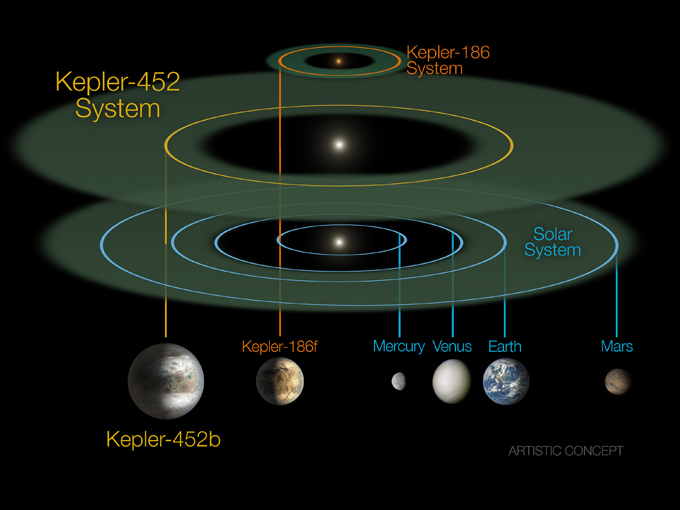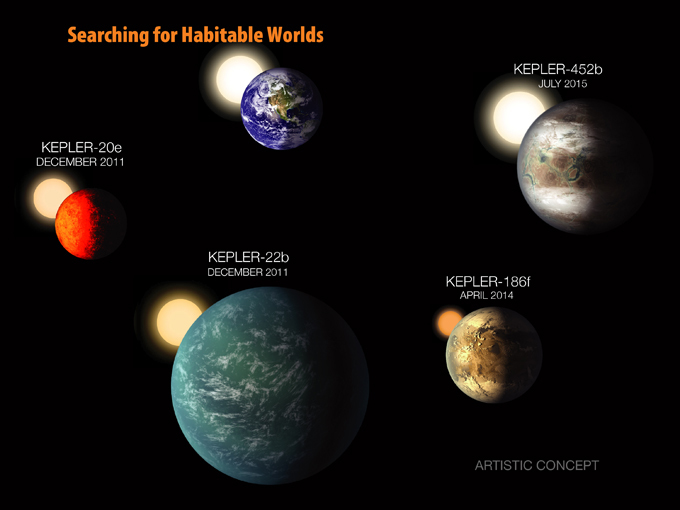Searching for habitable worlds

Kepler Telescope has recently discovered a very Earth-like planet. The planet has both solid surface and water, it orbits its star in 385 days and, possibly, has an Earth-like atmosphere. The star, which is a little brighter than our sun, is located about 1,400 light years away in the Constellation Cygnus. Most likely, the planet is 60% larger than Earth. Its gravity is most likely twice the gravity of Earth

Kepler Telescope has recently discovered a very Earth-like planet. The planet has both solid surface and water, it orbits its star in 385 days and, possibly, has an Earth-like atmosphere. The star, which is a little brighter than our sun, is located about 1,400 light years away in the Constellation Cygnus. Most likely, the planet is 60% larger than Earth. Its gravity is most likely twice the gravity of Earth

Kepler Telescope has recently discovered a very Earth-like planet. The planet has both solid surface and water, it orbits its star in 385 days and, possibly, has an Earth-like atmosphere. The star, which is a little brighter than our sun, is located about 1,400 light years away in the Constellation Cygnus. Most likely, the planet is 60% larger than Earth. Its gravity is most likely twice the gravity of Earth

Kepler Telescope has recently discovered a very Earth-like planet. The planet has both solid surface and water, it orbits its star in 385 days and, possibly, has an Earth-like atmosphere. The star, which is a little brighter than our sun, is located about 1,400 light years away in the Constellation Cygnus. Most likely, the planet is 60% larger than Earth. Its gravity is most likely twice the gravity of Earth

Kepler Telescope has recently discovered a very Earth-like planet. The planet has both solid surface and water, it orbits its star in 385 days and, possibly, has an Earth-like atmosphere. The star, which is a little brighter than our sun, is located about 1,400 light years away in the Constellation Cygnus. Most likely, the planet is 60% larger than Earth. Its gravity is most likely twice the gravity of Earth



